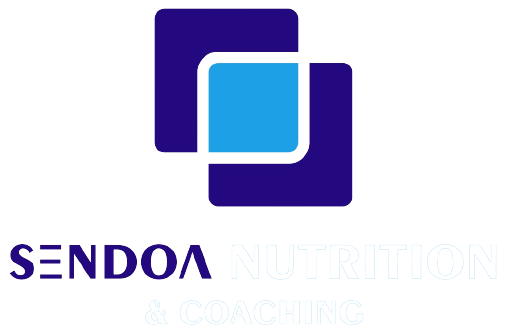When you are willing to participate in the triathlon competition, it’s not just to commit to the event but to the training as well. So when you hear such stories of triathletes who complete the event with minimum preparation, it does possibly take a lot of time, depending on the occasion and its distance.
The amount of time needed to train for a triathlon varies somewhat depending on your training paces and race objectives, but it also falls into fairly conventional categories depending on the event lengths. The section below provides a starting point for basic expectations regarding your time commitment by summarizing those weekly training hours, both overall and by swim/bike/run hours.
What’s left out of the summary are all the “extra” hours spent traveling to and from your swimming pool bike route, gym, run, shopping for foodstuff, eating, or just daydreaming about it.
Preparing recovery shakes, using a foam roller, or simply lying motionless on the floor, taking numerous showers, doing loads and loads of laundry, and having more conversations about triathlon than your spouse, family, or friends would typically enjoy.
The “extra” time for a sprint or Olympic distance race is only a few hours; for a half-Iron (70.3) or Ironman endurance event, the “extra” time can be two to three times that amount.
Strength training time is also not covered in the summary mentioned. Every triathlete, regardless of distance, can benefit from adding mobility drills, strength training, and core stability exercises to their weekly program.
Regardless of race distance, this could add between 30 minutes and two hours to the total of your weekly training hours, depending on how you approach strength, core, and mobility work and wherever you are in the season relative to race day.
Everything You Need to Know About Triathlon Training
A triathlon is a demanding competition that combines the combination of running, riding, and swimming. Triathletes typically need to devote a significant amount of time to their fitness regimen in the months before the triathlon event.
Depending on the situation or style of the triathlon, different amounts of time will be spent training before the event. Generally speaking, training for a triathlon takes a large amount of time.
The amount of time an athlete invests in training before a triathlon can have an impact on how well they perform during the competition.
So, How Long Do Triathletes Usually Train? When training for a triathlon, there are numerous things to consider. In the weeks or months preceding a triathlon, the average triathlete trains for roughly 10 hours per week. How much training is required
Those that follow weekly training hour ranges are suitable for the majority of athletes, however, some may have paces, objectives, or training plans that need them to exercise outside of these ranges.
Most weeks will fall into the ranges shown for sprint and Olympic distance events. Weekly training hours for half-ironman (70.3) and Ironman distance events change significantly as a training season progresses, so ranges are given for both typical weeks and peak weeks.
Read More: How Much Does a Triathlon Coach Cost – Comparing Options (2023)
What are the Total Weekly Hours of Training As Per the Distance
- Sprint-distance training duration per week is 4 to 5 hours
- Olympic-distance training duration is 6 to 8 hours
- Half-Ironman training hours for a week: 11 to 14 hours (peak week)/ 9 to 11 hours (average week)
- Ironman training hours per week: 15 to 19 hours (peak week)/ 11 to 14 hours (average week)
A Key Consideration Before Adding Hours
There has been a lot written about the difficulties of triathlon training, but one of the major performance elements that is sometimes disregarded is training volume or the number of hours you put in each week.
Have you ever wondered how much exercise you need to get in each week to perform at your peak? The answer varies from person to person, but based on my own experience, I’d suggest that 9 or 10 hours of skillful training per week are sufficient for a gifted athlete to win their age category in some races.
A gifted athlete needs several years and around 30 hours per week to become a professional. Whatever your skill level, it’s possible that by progressively raising your volume, you, too, could get better.
This is due to the fact that a slow increase in volume will encourage your body to adapt to increased training loads, which will make you fitter and faster.
On the other hand, your performance increases unavoidably begin to plateau when you exercise at a certain level for a number of years (for example, 9 hours per week).
How to Add Training Hours in a Busy Week
It might not be possible for everyone to work fewer hours or earn less if you have a family to support. Nevertheless, there are a few non-life-altering things you may do to lengthen your training period.
Making most of your runs one continuous session after your bike ride is one solution. In this manner, you may combine two sessions into one and yet reap the rewards of training tailored to a particular race.
Another thing is to gradually lengthen the duration of your workouts as opposed to attempting to perform more of them. This implies that you won’t have to waste time getting dressed, taking a shower, or attending additional training classes.
Just resist the urge to increase your weekly mileage with trash miles. A five-mile bike ride to work and back, for instance, could seem like time-efficient supplementary training, but it’s usually insufficient to cause your body to adapt.
In order to prevent overtraining and guarantee that you train with a progressive increase in volume, using a smart triathlon training plan appropriate for your level of experience can also assist.
Read More: How to Become a Certified Triathlon Coach?
How Fast Do You Add Training Hours?
It is difficult to add some more hours in training. If you somehow manage to increase the duration of your training volume, must do it carefully. Although it is not advisable to increase the pace frequently with hefty speed.
Once you have extra time and feel ready to add additional hours in training hours, do not exceed it by 10% monthly. And 5% is more suitable in most cases.



